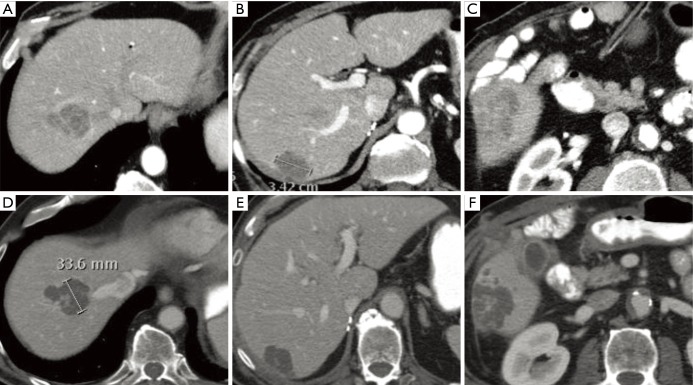Figure 3.
Combination Y-90 SIRT and EGFR inhibitor in colorectal cancer. This 69-year-old male had metastatic colorectal cancer with progression on first-and second-line therapy. He was on cetuximab with progressive liver metastases in the right lobe of the liver (A-C). He was mapped 2 weeks after his most recent dose of cetuximab and treated with SIRT the week after mapping. His biologic agent was restarted two days after treatment. Reimaging one month after treatment (D-F) demonstrated extensive necrosis of his liver metastases. His carcinoembryonic antigen dropped from 77 to 4 µg/L. Several interventional radiologists were surveyed regarding the length of time from the last dose of an EGFR inhibitor to performing arteriography with intervention. There was less experience with these drugs than with bevacizumab and only three responses were given: two interventional radiologists preferred 4 weeks from the most recent dose and the third preferred 2 weeks from the most recent dose. All respondents mentioned they had much less experience with biologic drugs outside bevacizumab. Y-90, yttrium 90; SIRT, selective internal radiation therapy; EGFR, epidermal growth factor receptor.

